Log in or create new account to save this product to your wishlist.

How to Grow & Care for English Ivy
With English Ivy scaling the walls, homes get that extra cosy feeling. You can also add more green to your balcony or indoor space by planting ivy in hanging baskets or simple pots. Find out what to look out for when growing and caring for ivy plants in this post.
English ivy is an extremely versatile and hardy plant, before you get stated you might want to have a look at all the different varieties of the Hedera plant. Once you picked your favourite, you can begin the ivy planting. But let’s start with the botanical basics.
- Overview of English ivy
- Steps to plant English ivy
- Maintaining English ivy
- Propagating English ivy
- Handling common issues
- FAQs about English ivy
- Ready to start ivy planting?
Overview of English ivy
English ivy (Hedera helix), is a species of flowering plant in the Araliaceae family, native to Europe and Western Asia. This evergreen vine skilfully climbs surfaces like tree trunks, walls, and fences, thanks to its aerial rootlets. It thrives especially well in moist, shady locations and as we all know, we have more than enough of those in the British Isles.
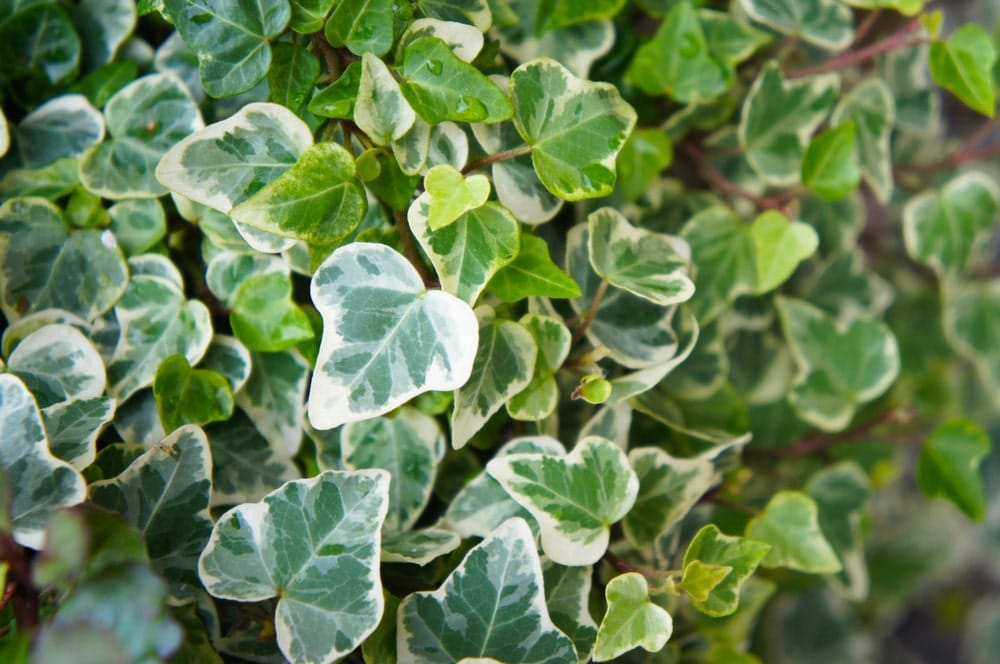
-
Light: Partial to full shade are ideal, but direct sunlight is not a problem either. It can also grow well indoors in bright, indirect light.
-
Soil: Well-draining soil that is rich in organic matter. A slightly acidic to slightly alkaline soil pH (6.0-7.8) is wonderful for English ivy.
-
Water requirements: English ivy prefers consistently moist soil, but it should not be waterlogged. Water the plant when the top inch of soil feels dry to the touch.
-
Size: The only limit is the size you prune it to. Potted plants also don't grow indefinetely.
-
Flowering: Small, greenish-white flowers in the fall.
-
Maintenance level: Low
Growth habits
English ivy is a robust and versatile climber that can reach heights of 20 to 30 metres when given suitable surfaces to climb, such as trees or walls. It features two types of leaves: palmately lobed juvenile leaves on creeping and climbing stems, and unlobed cordate adult leaves on fertile flowering stems. Now, if you are asking yourself how fast does ivy grow, you are onto something. Ivy Hedera helix grows 20 to 28 inches (ca. 50 to 70 cm) annually and creates a dense green cover. These characteristics make it ideal for both aesthetic and practical uses in landscaping.
Uses in landscaping
Many use English ivy as a decorative hedge or ground cover. It is particularly effective in quickly creating screens that enhance privacy while adding a touch of cottage flair to the landscape. The Hedera plant is also valued for its adaptability to various light conditions and soil types, flourishing in everything from full sun to deep shade. Its drought resistance ensures it remains lush even during dry spells. Moreover, its ability to cool building interiors in summer and provide insulation in winter makes it a practical choice for eco-friendly landscaping. But beware, ivy can also cause damage to the facade, for example if the foliage is too dense or the crawling roots break up mortar.
English ivy varieties
Hedera helix ‘Buttercup’
A vibrant and lush ivy with bright yellow-green leaves.
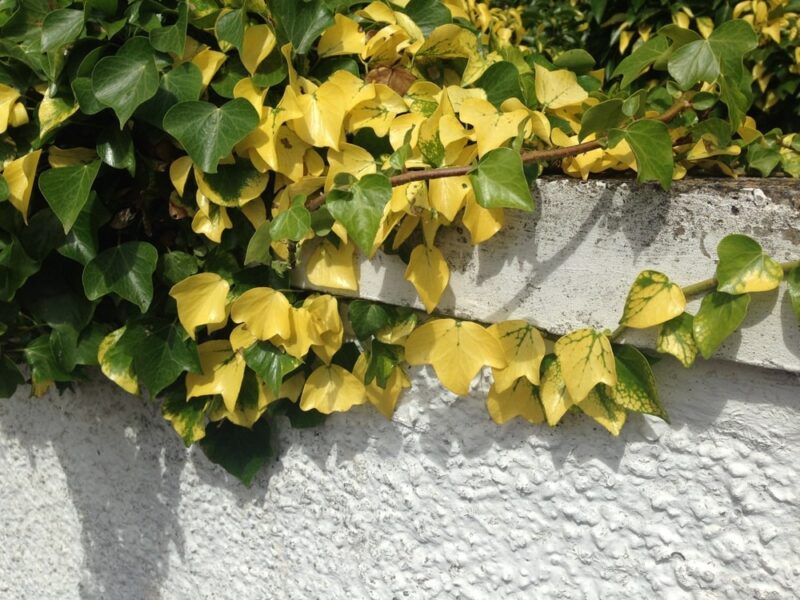
Hedera helix ‘Goldchild’
An elegant ivy with variegated leaves featuring shades of gold and green.
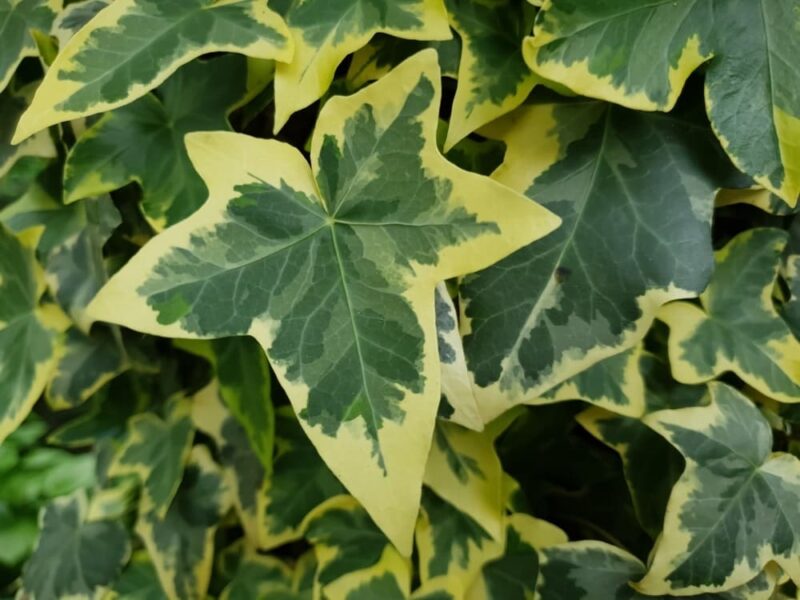
Hedera helix ‘Midas Touch’
A striking ivy variety with golden-yellow foliage that adds a touch of warmth to any setting.
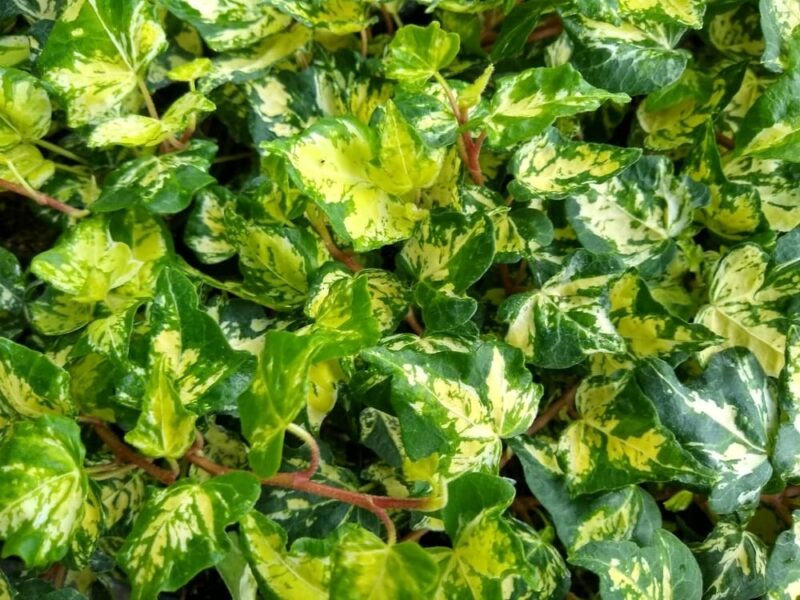
Steps to plant English ivy
Do you want to plant ivy indoors or outdoors? Depending on your plans, the steps to planting ivy vary.
Planting ivy indoors
Pick a pot and location first. Do you want to plant English ivy in a hanging basked, or would you rather use a simple pot and place it on a shelf? Ivy also looks lovely in longer planters. When it grows it looks almost like a green indoor waterfall. Make sure the pot is as deep as the root ball of the ivy plant. If you want to plant multiple plants next to each other, lave a little space to allow for spreading and adequate air circulation.
Planting ivy outside
Select the location for your ivy. Though ivy prefers partial shade, it’s not going to wither if it gets some direct sunlight. Ensure the soil is well-drained and not waterlogged. If the soil is too compacted, adding some sand and loosening it with a rake is a good idea. For optimal growth, areas with alkaline soil are best; however, ivy can adapt to a wide range of soil conditions. Clear the area of any weeds before you plant ivy.
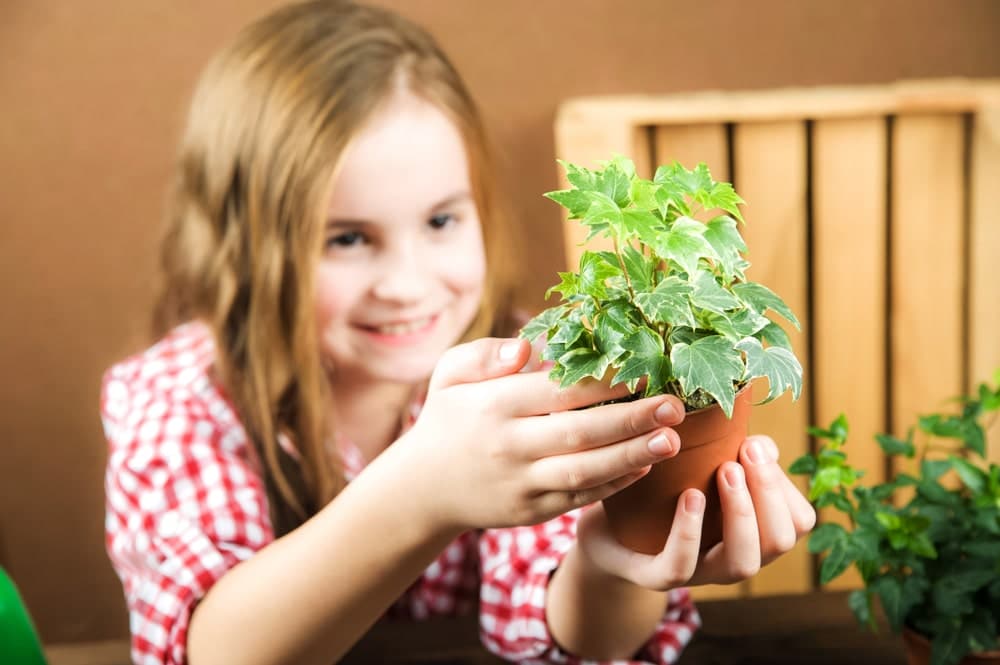
After planting, water your indoor or outdoor ivy thoroughly to settle the soil around the roots and help eliminate any air pockets. English ivy requires consistent moisture, especially during the first growing season, to establish a robust root system. Water the plant once the top of the soil is dry.
Maintaining English ivy
To keep your English ivy thriving, regular watering is crucial. It’s important to let the soil dry out between watering to prevent root rot. During the initial growth phase, maintain moist soil conditions, but once established, English ivy becomes quite drought tolerant.
Fertilising and soil management
English ivy generally requires minimal fertilisation. If grown in pots, replace the potting soil annually to replenish nutrients, which is usually sufficient for its growth needs. For those planted in the ground, there’s no need for additional feeding. The plant prefers well-drained loam and thrives in soil with a slightly acidic to neutral pH, between 5.5 and 6.5. Avoid clay-based soils to ensure proper drainage.
Seasonal care tips
Prune English ivy in mid-spring to manage its size and prevent it from becoming overly dense, which can lead to pest issues. If you notice any variegated leaves reverting to green, trim these shoots promptly to maintain the desired aesthetic. For indoor plants, adjust watering during the colder months, reducing frequency to match the plant’s slower growth rate. This helps prevent issues like brown leaf tips, which indicate too warm conditions or dry air.
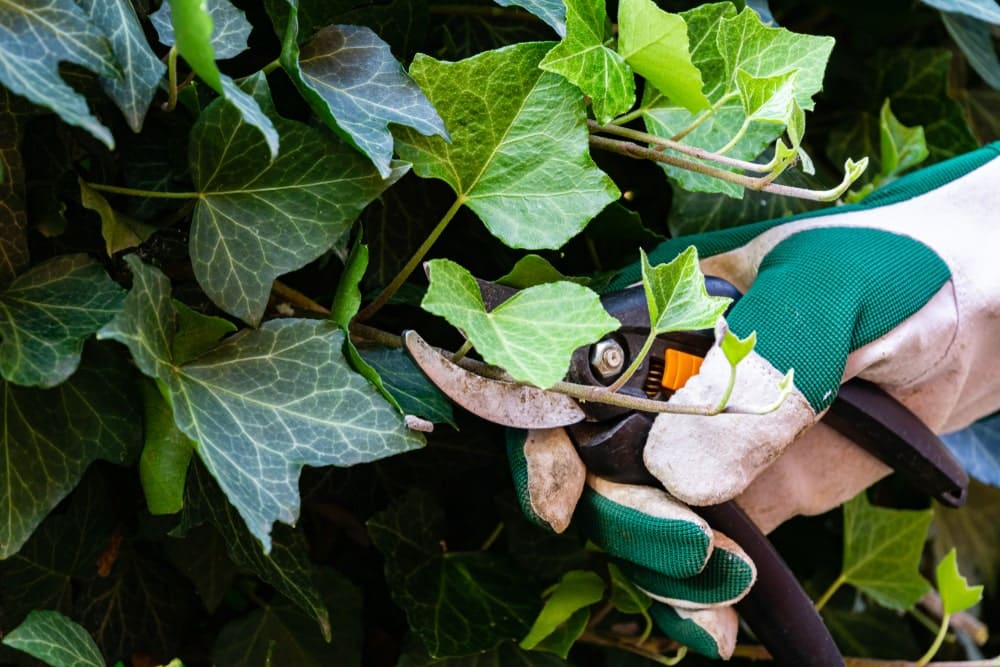
Propagating English ivy
Propagating English ivy is easy, so don’t be shy about it. In late summer, take semi-ripe cuttings from climbing shoots. Each cutting should be 4 to 5 inches (ca. 13 cm) long, with at least two leaves or 3 to 4 leaf nodes. You can either plant these cuttings in a moist potting mix or start them in water. For soil propagation, place the stem sections into well-drained potting medium and cover with a plastic bag to maintain humidity. Keep these in a bright spot out of direct sunlight and remove the bag once you see new growth. If propagating in water, ensure the container is clear and change the water every two to three days to prevent bacteria build-up.
Caring for new plants
Once your ivy cuttings have developed roots, which typically takes a few weeks, they are ready to be moved to a more permanent location. If you started the cuttings in water, gently transition them to soil to avoid shock. Plant them in well-draining potting soil, ensuring that the roots are well-covered but not too deep. Keep the soil moist but not waterlogged to encourage further rooting. For those propagated in soil, continue to keep the environment humid and the soil moist until the plant is well-established.
Handling common issues
English ivy is relatively resistant to pests, but vigilance is key to preventing infestations. Common pests include aphids, which attack young growth, especially on indoor plants, and vine weevils that target pot-grown specimens. To manage these, you can have a look at our expert articles about these pests. Additionally, spider mites and mealybugs may appear, especially under dry conditions. Regular misting and wiping the leaves with soapy water or alcohol can help prevent infestation. If you notice any scale insects, such as the Viburnum scale, treating with appropriate insecticides or simply wiping them off with alcohol can keep them at bay.
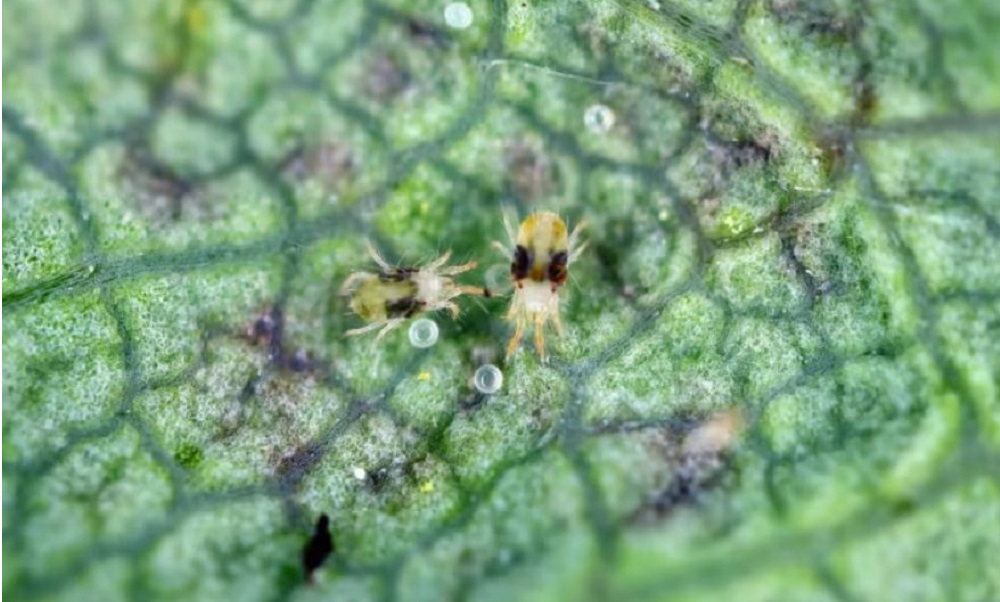
Avoiding diseases
Ivy plants can be affected by several diseases, primarily fungal and bacterial. Common issues include leaf spots and powdery mildew, which typically do not severely impact the plant’s health but can be unsightly. For bacterial and fungal leaf spots, improving air circulation, avoiding overhead watering, and removing infected leaves are effective preventive measures. If diseases persist, applying fungicides can help. Additionally, plant your ivy in well-draining soil and avoid overwatering to prevent root rot diseases like Phytophthora and Fusarium.
FAQs about English ivy
English ivy flourishes best in shaded areas, making it ideal for ground coverage under trees or in spots that receive indirect sunlight. However, during the winter months, it can tolerate partial direct sunlight. Insufficient sunlight can impede its growth and affect the leaf colour patterns.
Yes, you can grow ivy in pots. Indoors as well as outdoors. When you plant ivy in pots, make sure the root ball is completely covered with soil and renew it every year. Waterlogging may cause root rot, so make sure the water drains.
English ivy grows rather quickly—20 to 28 inches (ca. 50 to 70 cm) per year.
Ready to start ivy planting?
Now you know all you need to get started planting your crawling ivy plants. In case you want to combine ivy with more colourful flowering plants, we recommend our articles on camellias, summer flowers and hydrangeas. Do you have any tips yourself that you would like to share with other garden enthusiasts? Or maybe you intend to ask a question? Then leave a comment.
Happy gardening!
-
Orchids: A Complete Guide on How to Care for ThemWant to give your orchid the best possible care? Discover essential tips from placement to watering and pruning. Learn everything you need to know!Read more
-
Growing Wisteria Made Simple: From Planting to Perfect BloomsWith blossoms like a purple waterfall, Wisteria sets an almost magical and colourful mood. If you want to grow this beauty in your garden, you’ll need a bit of patience. Don’t worry, it will most definitely pay off.Read more
-
How to Build a DIY Greenhouse: A Practical Guide for Smart SpendersImagine extending your growing season throughout the year, nurturing tender plants regardless of the weather, and creating a personal garden sanctuary. This is precisely what a DIY greenhouse offers you. Let’s learn how to build one.Read more
-
How to Grow Eucalyptus in British GardensWith a little love and care, eucalyptus trees can thrive in English gardens. Since they don’t germinate well without proper help, there are not considered invasive. So, there is no reason not to plant them if you enjoy their looks.Read more
-
Transform Your Garden with All-Year-Round Flowering PlantsDid you know you can enjoy blooming flowers even in January? With the right selection of all year round plants, there’s no need to wait until spring to add some colour to your garden.Read more
-
How to Create a Butterfly Garden: A Simple Guide for British GardensThe UK's butterfly population includes 59 different species. These beautiful winged creatures face a steady decline because of habitat loss, pollution and changing weather patterns. Your garden can become a vital link between nature reserves and natural habitats. Let’s explore how.Read more
-
Volcanic Rock Dust for Your Garden—Application and TipsDid you know that volcanic rock dust is a brilliant organic soil improver? This article explains exactly what it's good for and how to use it properly.Read more
-
How to Use Landscape Fabric ProperlyIf weeds or erosion in your garden are troubling you, landscape fabric might be the solution. We’ll explain how and when to use it properly, just keep on reading.Read more
Leave a comment
Your answer will be displayed on the site and the interested party will be notified by email.
Leave a comment
Have a question or want to share your experience? Leave us a comment.

- Order by 2PM = shipped today
- 250.000+ satisfied customers!
- 60 day satisfaction guarantee

- Order by 2PM = shipped today
- 250.000+ satisfied customers!
- 60 day satisfaction guarantee

🌱 All important maintenance moments for your lawn during the year. Leave your email and we will send you the lawn calendar for free.
Enter your email
Receive the lawn calendar in the mail
Enjoy a green lawn all year round!


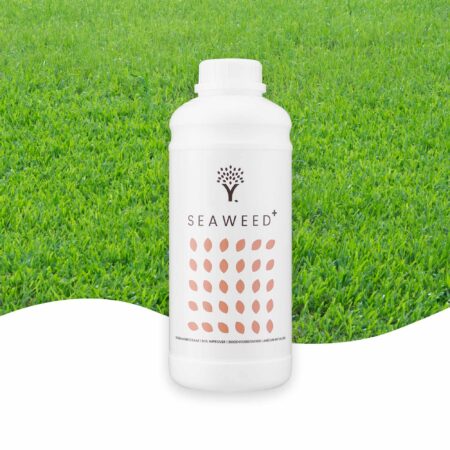


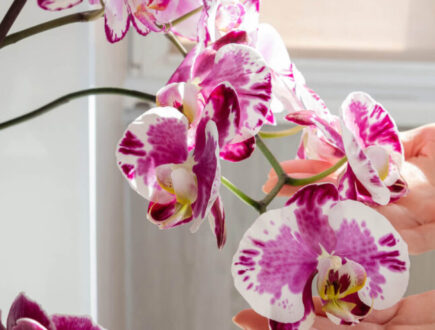
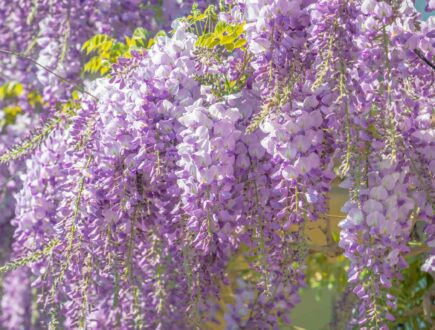








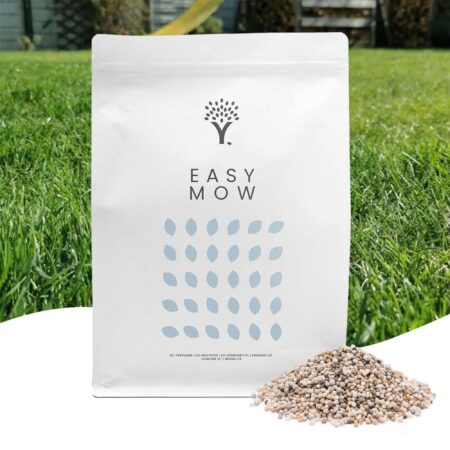
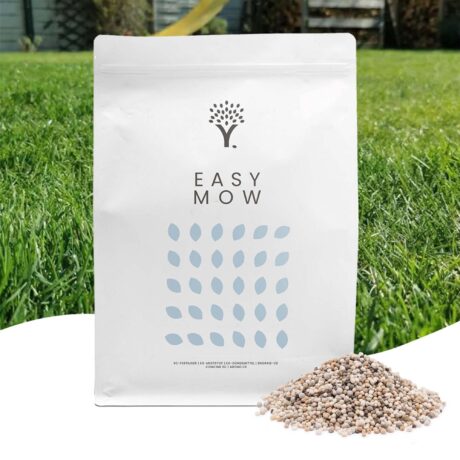





Comments (0)
There are no comments yet. Well then, what are you waiting for to
Be the first to write your comment!inaugurate this pretty page?
Do you have some comments?